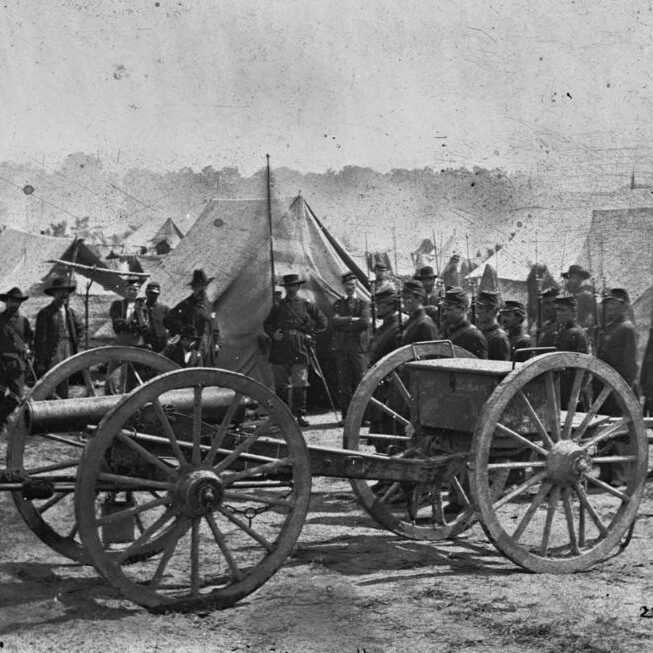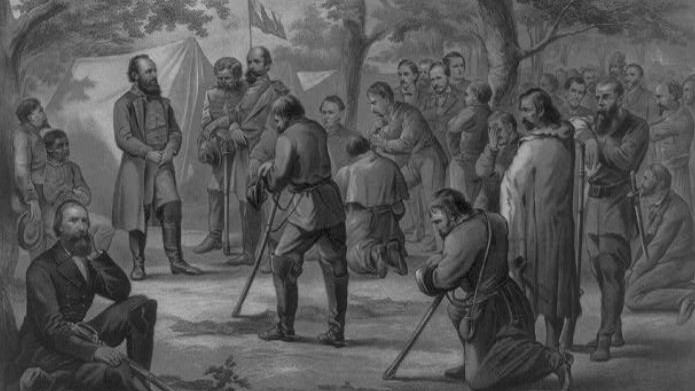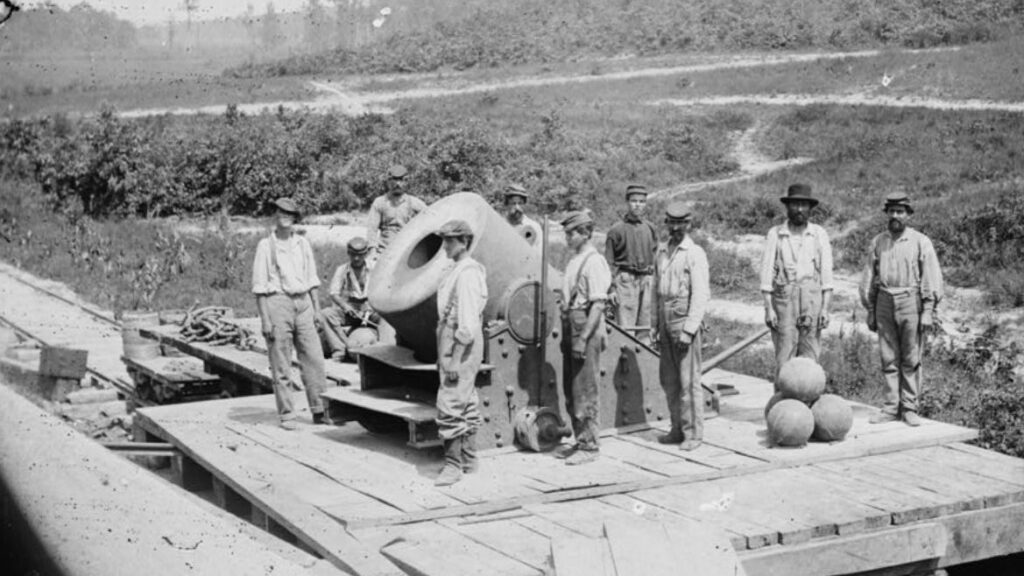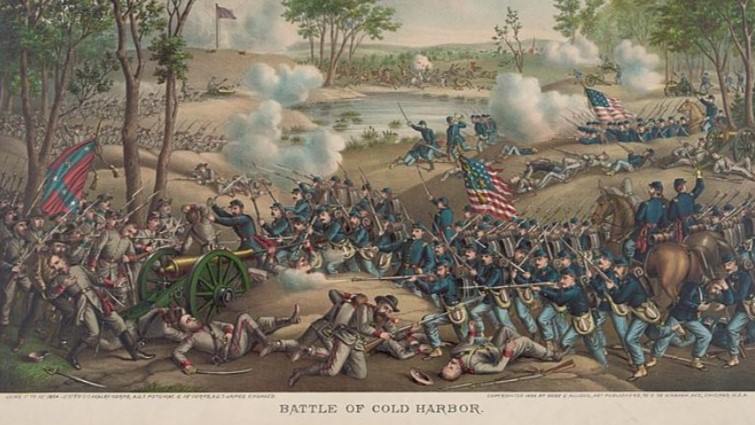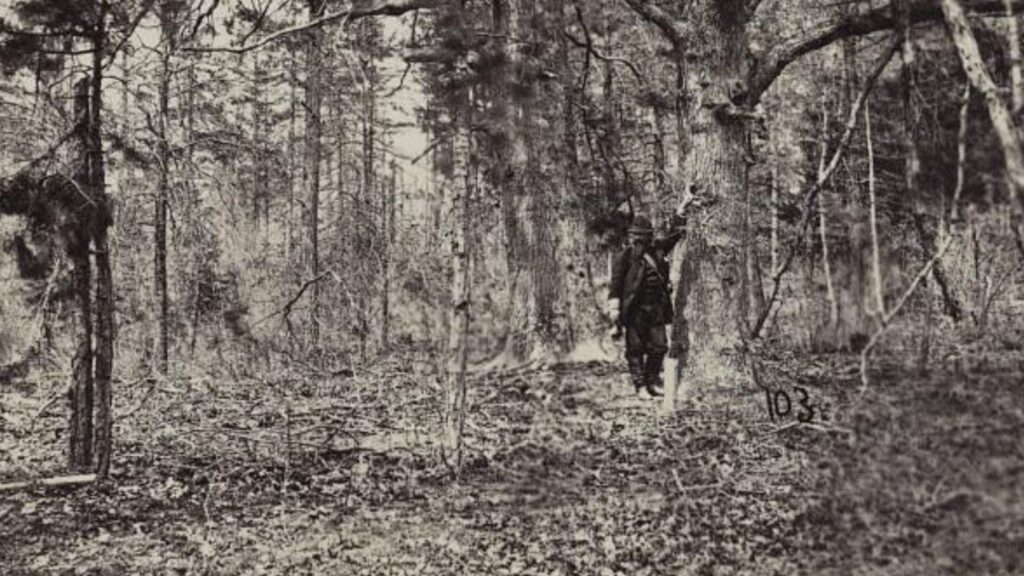This article explores the lesser-known story of the Civil War in Texas. Major battles like Gettysburg and Antietam dominate the national narrative. But the war reached far beyond these battles. Texas witnessed battles and skirmishes that shaped the state’s role in the Confederacy and contributing to the wider war effort.
- 1. Victories at Sabine Pass: A Thorn in the Union's Side
- 2. The Battle of Galveston (1863)
- 3. The Battle of Palmito Ranch (1865) – Final Battle of the Civil War
- 4. Skirmishes and Raids in the Texas during the Civil War
- 5. What Was the Most Famous Texas Fighting Unit of the Civil War?
- 6. Why Did Texas Join the Confederacy?
- 7. Why Was Texas Important to the Confederacy?
- 8. The Long Shadow: Legacy of the Civil War in Texas
- Further Reading
1. Victories at Sabine Pass: A Thorn in the Union’s Side
Sabine Pass is located near the Texas-Louisiana border. It served as a critical gateway during the Civil War.
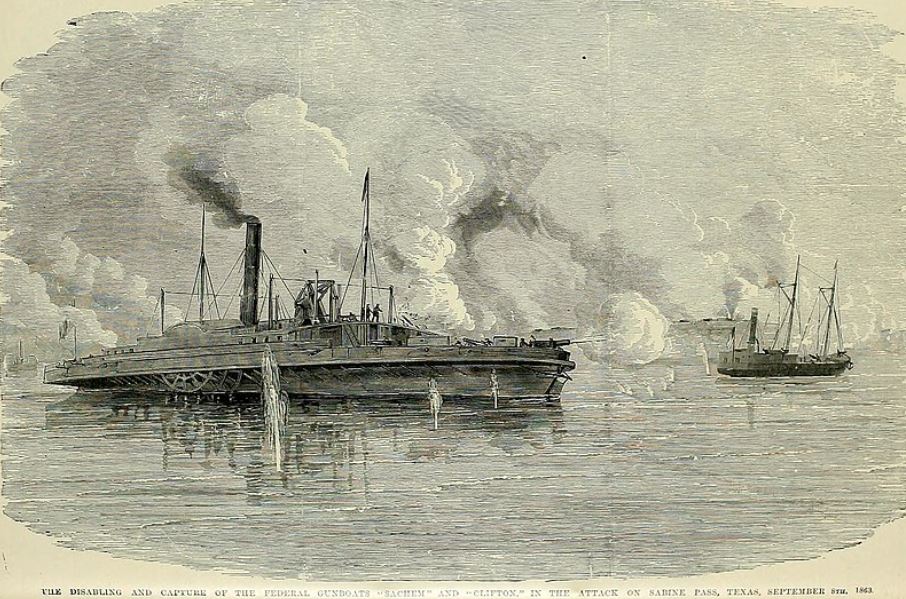
For this reason, two key battles fought here, in September 1862 and September 1863.
First Battle of Sabine Pass, Texas
The First Battle of Sabine Pass occurred on September 24–25, 1862, marking the first American Civil War bombardment by the United States Navy of a Confederate fort below Sabine City, now known as Sabine Pass, Texas.
The battle aimed to strengthen the Union naval blockade of the Texas coastline and deter Confederate ground forces from reinforcing Galveston’s defense.
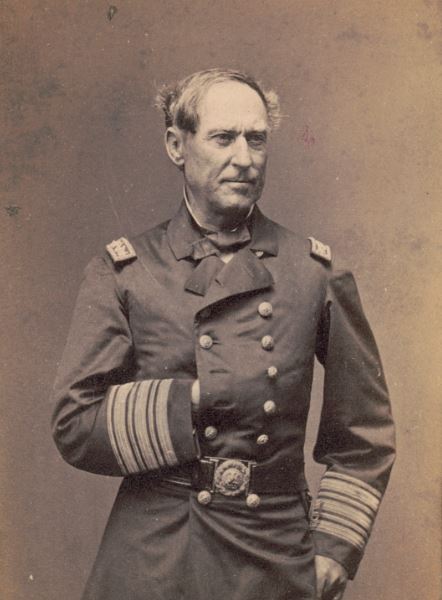
Rear Admiral David Farragut, commander of the West Gulf Blockading Squadron, tasked Master Frederick Crocker and Acting Master Quincy Hooper with capturing the port.
The Union forces, comprising two schooners and one steamer, engaged Confederate forces at Fort Sabine, resulting in no casualties on either side.
The Union victory led to the capture of Sabine City, the first major Texas city captured by the Union during the Civil War.
Following the battle, Union forces continued operations in the area, capturing blockade runners and destroying infrastructure.
Master Hooper withdrew Union forces from Sabine Pass, returning control to the Confederates, in response to intelligence indicating a large Confederate army preparing to counter-attack.
The battle is significant in the context of the Trans-Mississippi Theater of the American Civil War and the Union’s efforts to blockade the Texas coast.
The Second Battle of Sabine Pass, Texas
The Second Battle of Sabine Pass resulted in a decisive Confederate victory, marking one of the most significant engagements in military history, according to Confederate President Jefferson Davis.
The Second Battle of Sabine Pass occurred on September 8, 1863, as a failed attempt by the Union Army to invade Confederate Texas during the American Civil War.
The Union aimed to establish a military presence in Texas and prevent trade between Mexico and the Confederacy.
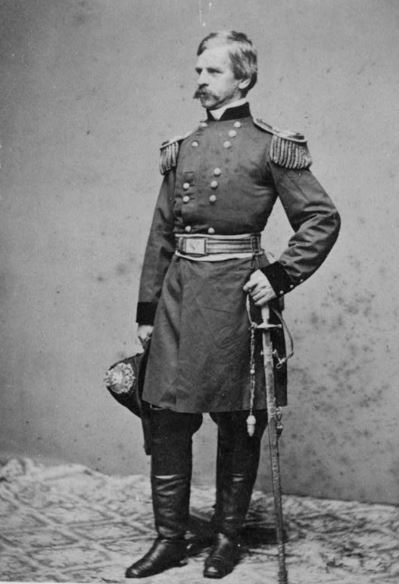
The Union expedition, led by Major General Nathaniel P. Banks, planned a combined Army-Navy campaign, but low water levels in the Red River delayed the overland invasion of Texas.
The battle plan involved silencing Confederate guns at Fort Sabine and landing infantry to secure the area, intending to march north to cut the railroad between Houston and Beaumont.
Despite the dominance in numbers, the Union forces faced unexpected challenges, including accurate Confederate artillery fire and inadequate knowledge of the river’s channels.
Confederate Lieutenant Richard W. Dowling led the defense with the Jefferson Davis Guards, resulting in the capture of two Union gunboats and no casualties for the Confederates.
Strategically, the battle ensured the delay of the anticipated overland Union invasion of Texas and forced the Confederacy to rely more on blockade running for supplies.
2. The Battle of Galveston (1863)
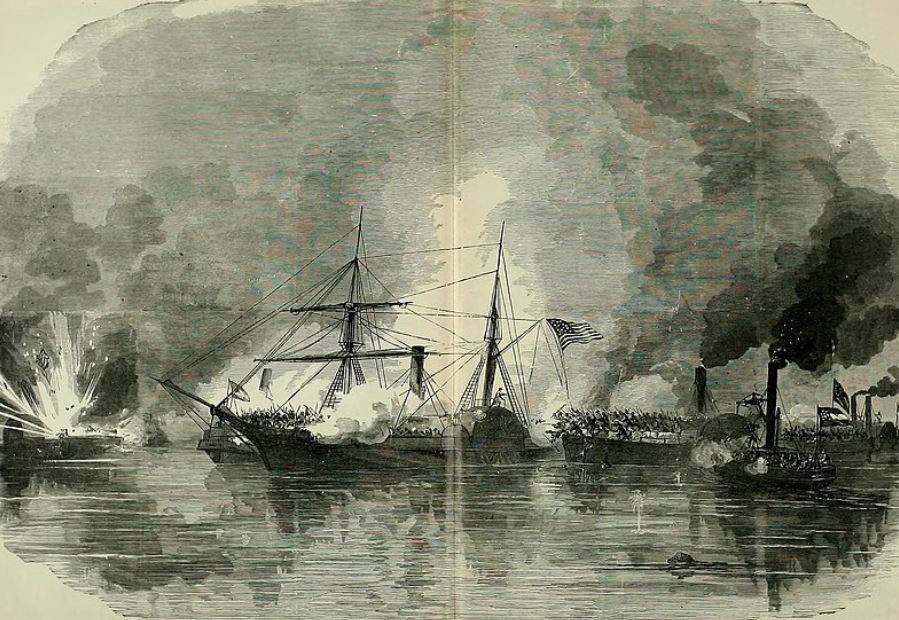
The Battle of Galveston was a significant naval and land battle during the American Civil War, resulting in a Confederate victory and the temporary lifting of the Union blockade around the city.
The Battle of Galveston occurred on January 1, 1863. It involved Confederate forces, led by Major Gen. John B. Magruder, expelling Union troops from the city of Galveston, Texas.
Confederate forces, including CS Bayou City and CS Neptune, engaged Union ships in Galveston Harbor, capturing USS Harriet Lane.
The Union fleet commander, William B. Renshaw, attempted to destroy the grounded USS Westfield to prevent its capture, resulting in casualties among Union troops.
Galveston remained the only major port under Confederate control at the end of the war.
3. The Battle of Palmito Ranch (1865) – Final Battle of the Civil War
The vast majority of Civil War battles had concluded by April 1865, with the surrender of Robert E. Lee’s Army of Northern Virginia at Appomattox Court House. However, the final clash of the Civil War took place a month later on May 12-13, 1865, near Brownsville, Texas – the Battle of Palmito Ranch on the banks of the Rio Grande.
News traveled slowly in the era, and communication between remote areas like Texas and the Eastern Theater was limited. Unaware of the war’s official end, Union Colonel Theodore H. Barrett led a force of roughly 300 Union soldiers, including the 62nd U.S. Colored Troops, against a Confederate contingent under Colonel John Salmon Ford.
Union forces attacked a Confederate camp near Fort Brown.
Union forces faced Confederate cavalry and artillery. After initial success, Union forces were driven back, and casualties were incurred on both sides.
Confederate forces repulsed the attack, resulting in a Confederate victory.
There were approximately 30 Union casualties compared to just 5 Confederate casualties.
Union Private John J. Williams believed to be the last man killed in the battle and potentially the last combat death of the war.
The Battle of Palmito Ranch is regarded by some as the last land action of the Civil War.
4. Skirmishes and Raids in the Texas during the Civil War
The thunderous cannons of Galveston and the battles at Sabine Pass might paint a picture of grand battles defining the Civil War in Texas. However, Texas’ experience was more characterised by smaller skirmishes and raids.
These smaller conflicts were a constant presence across the vast Texan landscape. Guerilla warfare tactics were employed by both sides, with Confederate outfits like Terry’s Texas Rangers and Union cavalry units conducting lightning-fast raids on supply lines and communication hubs.
Locations like Indianola and Port Lavaca witnessed daring raids aimed at disrupting Confederate commerce and capturing valuable resources.
Confederate forces like those under Colonel John Salmon Ford patrolled the region, engaging in skirmishes to prevent Union incursions and potential aid from Mexico.
These skirmishes, though not large-scale battles, were crucial in shaping the war’s course in Texas. They disrupted supply chains, harassed enemy positions, and kept both sides on edge.
The constant threat of surprise attacks and the need to maintain a strong presence across the vast state impacted Confederate troop deployment and resource allocation.
5. What Was the Most Famous Texas Fighting Unit of the Civil War?
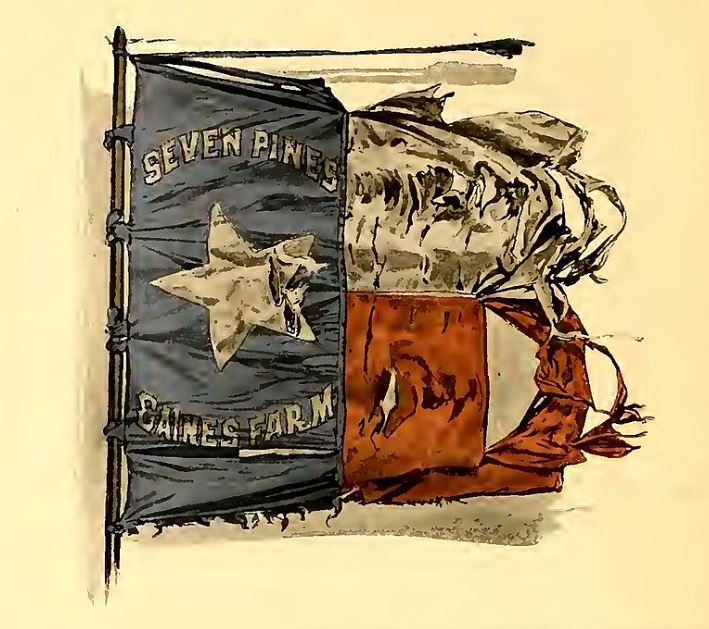
Among the thousands of Texans who fought for the South, one unit stands out as a contender for the title of the most famous Texas fighting unit – the Texas Brigade, also known as Hood’s Brigade.

Formed in October 1861 primarily through the efforts of John Allen Wilcox, a Texan congressman, the Texas Brigade initially struggled with inadequate weapons and equipment. However, under the leadership of John Bell Hood, a charismatic and aggressive officer, the brigade quickly earned a reputation for bravery and ferocity.
Hood instilled in his troops an offensive fighting style, earning them the nickname “shock troops.”
The Texas Brigade never fought on Texan soil. Instead, it carved its path to fame in the brutal battles of the Eastern Theater.
From the bloody stalemate at Antietam to the desperate defense at Gettysburg, the Texans were present for some of the war’s most pivotal moments. Their courage and resilience were on display at Second Manassas, where they spearheaded a crucial assault, and at Gaines’ Mill, where they suffered heavy casualties but held their ground.
However, by the end of the Civil War only 617 of the 5,353 men who enlisted in the three Texas and one Arkansas regiments remained.
Other Notable Texan Units
While the Texas Brigade is often the most recognized Texas unit, other formations played significant roles in the Civil War. Terry’s Texas Rangers, a mounted unit comprised of experienced frontiersmen, excelled at scouting, raiding, and disrupting Union supply lines. Led by Colonel Benjamin Franklin Terry, these rangers were known for their daring exploits and skill in guerilla warfare.
Another notable unit was Walker’s Greyhounds Division, commanded by Major General John George Walker. This division, primarily composed of Texas troops, fought primarily in the Western Theater and the Trans-Mississippi Department. They participated in key battles like Mansfield and Pleasant Hill, Louisiana, and were known for their resilience and fighting spirit.
6. Why Did Texas Join the Confederacy?
The decision of Texas to join the Confederacy in 1861 was not made lightly. It stemmed from a complex interplay of factors, deeply rooted in the state’s history, political ideology, and economic realities.
The Looming Shadow of Slavery
Texas’ economy and society were heavily reliant on enslaved labor.
Cotton plantations, the backbone of the state’s economic prosperity, depended on the forced labor of enslaved people. Texans, particularly wealthy plantation owners, feared any federal restrictions on slavery, viewing it as an existential threat to their way of life.
The rise of the Republican Party, with its anti-slavery platform, fueled anxieties in Texas, leading many to believe that joining the Confederacy offered the best chance to protect the institution of slavery.
States’ Rights and Federal Overreach
Many Texans held a strong belief in states’ rights, cherishing the idea of self-governance.
They viewed the federal government with suspicion, particularly regarding its perceived overreach in matters they deemed relevant to individual states.
The growing tension between states’ rights and federal authority, which had been simmering for decades, reached a boiling point with issues like tariffs and federal control over slavery.
Texans, wary of a powerful federal government, saw the Confederacy as a way to preserve their autonomy and state sovereignty.
Debt and the Quest for Land
The Republic of Texas, prior to its annexation by the United States in 1845, had amassed significant debt.
Some Texans believed that joining the Confederacy would offer financial assistance in tackling this debt burden.
Additionally, some Texans desired federal support in acquiring additional land from Mexico, a goal that they hoped the Confederacy would be more sympathetic to than the United States government.
7. Why Was Texas Important to the Confederacy?
The vast plains and fierce independence of Texas weren’t merely symbolic during the Civil War. For the Confederacy, Texas served as a crucial strategic asset, contributing significantly to the war effort in several key ways.
A Wellspring of Manpower
The Confederacy, facing a manpower shortage throughout the war, found a valuable resource in Texas.
Over 70,000 Texans answered the call to arms, bolstering the Confederate army with fresh troops. Units like the famed Texas Brigade, known for their bravery and aggressive tactics, fought valiantly in major Eastern Theater battles, adding significant firepower to the Confederate cause.
A Treasure Trove of Resources
Beyond manpower, Texas’ vast lands offered a wealth of resources vital to the Confederacy’s war machine.
Large cattle herds provided a steady supply of meat for the Confederate army, while fertile farmland yielded crops to feed the troops.
Most importantly, Texas was a major producer of cotton, the “white gold” that fueled the Confederacy’s economy and international trade.
By controlling Texas, the Confederacy secured a crucial source of income to purchase weapons and supplies.
A Gateway to a Potential Ally
The geographical location of Texas held strategic significance. It shared a long border with Mexico, a neutral country that the Confederacy actively courted as a potential ally.
By securing Texas, the Confederacy hoped to establish a gateway for trade with Mexico and potentially gain its support in the war. This possibility, though ultimately unrealized, added another layer of importance to Texas.
8. The Long Shadow: Legacy of the Civil War in Texas
The fighting faded in 1865, but the Civil War left a mark on Texas’ social and political landscape. The war’s impact reverberated through the state, shaping its future in several key ways.
A Politically Reshaped State
Reconstruction, the period following the war that aimed to reintegrate the Confederate states into the Union, brought about significant political changes in Texas.
Federal control and the enfranchisement of Black men challenged the pre-war power structures dominated by white landowners.
This era also witnessed the rise of the Democratic Party, which held sway in Texas politics for over a century. The Civil War reshaped the political landscape, setting the stage for a new era in Texas governance.
A Re-evaluation of History
The legacy of the Civil War in Texas continues to be debated and reinterpreted.
Monuments and symbols associated with the Confederacy have sparked conversations about race, history, and reconciliation. Efforts to preserve battlefields and historical sites coexist with a growing desire for a more nuanced understanding of the war’s complexities.
The Civil War molded Texas in profound ways. It solidified the state’s identity as a fiercely independent entity.
Further Reading
If you enjoyed this article, you may be interested to read more about the American Civil War events, or perhaps read about the South’s important victories. Read here for more general American history.


